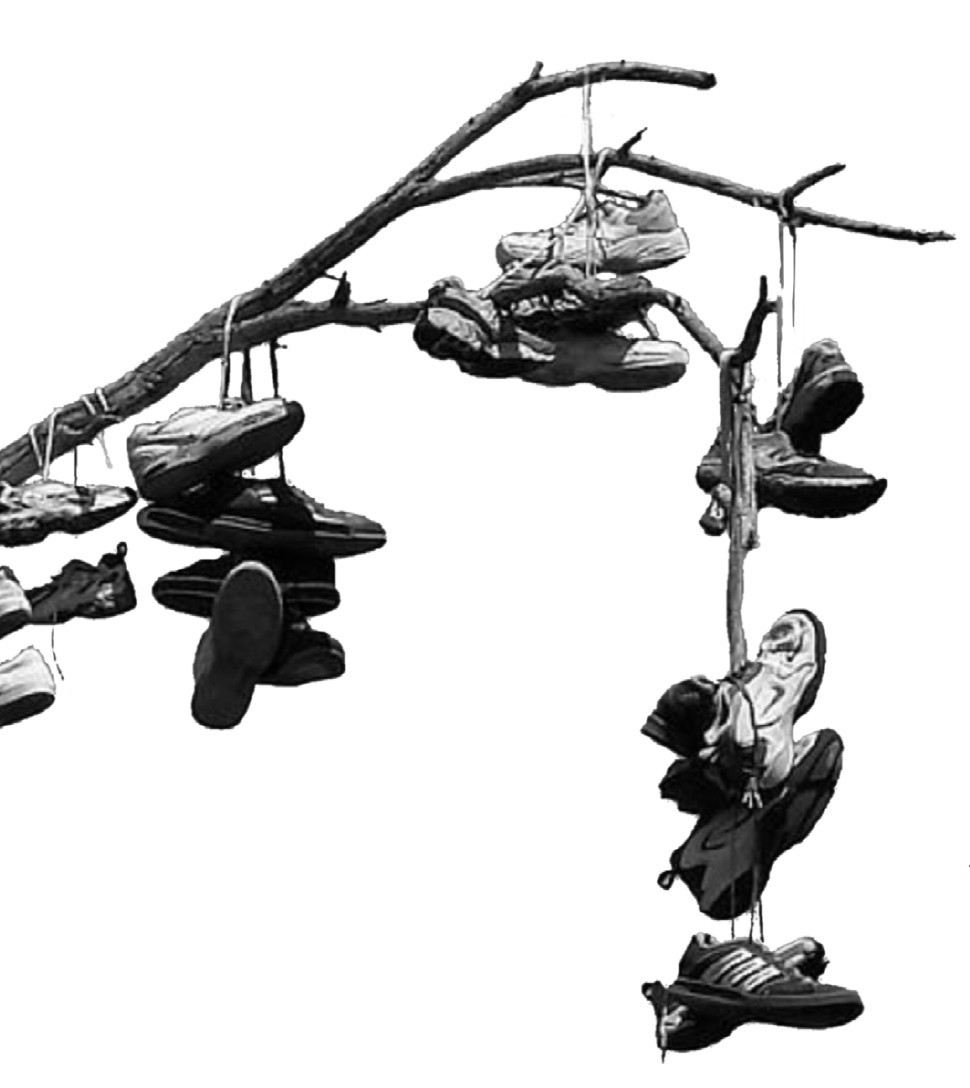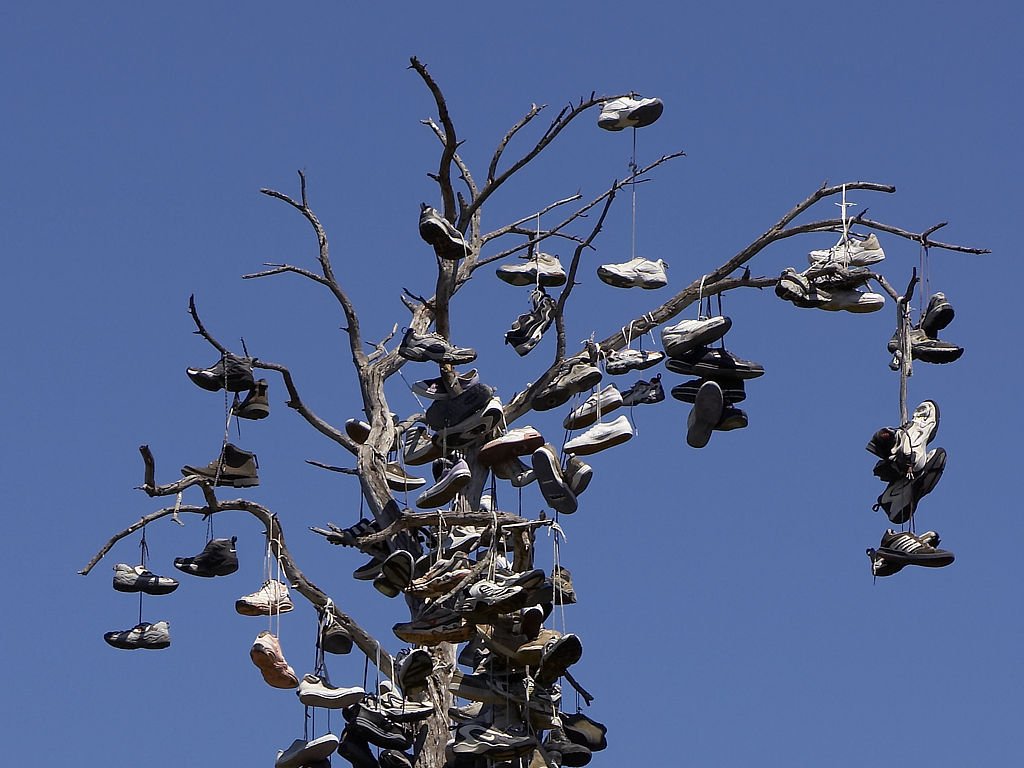We’ve all seen the lonely pair of shoes, laces tied together, dangling from a power line - the result of a neighborhood bully or prankster. But the tradition of shoe tossing is international and meaningful. A street in Flensburg, Germany, is famous for its shoefiti (shoe graffiti), a type of ongoing art project contributed to by tourists. Some suggest it started with a tradition where a boy who has grown into a man hangs his old shoes outside his house. There are several accounts of the origin of shoe tossing, although its true beginning remains a mystery. In some cultures, shoes are thrown to commemorate the end of a school year, a marriage, or other rites of passage. Members of the military are said to have thrown military boots after the completion of basic training or upon leaving the service. On Route 66, many travelers enjoy contributing to roadside landmarks, and shoe trees along the route are a testament to the wanderer’s spirit and sense of accomplishment - what is a better souvenir from a trip than a well-worn pair of shoes?
Shoe trees have become a part of Americana road trip culture: there are over 75 shoe trees in the country, and many of them are located along desolate stretches of road. The bright foliage of the shoe tree calls to travelers as they pass, welcoming mirages along the endless straits of asphalt. Many people inscribe messages on their shoes before propelling them into the upper reaches of the tree: inspirational quotes, love notes, poems, and accomplishments. The range of footwear and messages in a shoe tree functions as an anthropological study of those who have passed through: high heels and cowboy boots, worn out old shoes and brand new shoes, regrets of the past and hopes for the future.

Two of the most famous shoe trees along the Mother Road are located near Stroud, Oklahoma, and Amboy, California. The tree located just east of Stroud, OK, on old Route 66, blossoms with a myriad of shoes from travelers celebrating completing over a third of the route on their way to California, or perhaps discarding well-worn shoes on the way home. The family owned and operated Shoe Tree Trading Post is located next door, and offers a little of everything, just like the tree.
Closer to the Pacific coastline and the end of the route lies a sprawling tamarisk tree outside the ghost town of Amboy, CA. With the majestic Amboy Crater in the background, the tree was a place for road trippers to celebrate the entry into California and reminisce about the miles left behind. This oasis of natural and polymer expression rises out of the desert in a whimsical entreaty to travelers.
However, the shoe tree carries a literal burden. Both trees in Stroud and Amboy toppled over in 2010, due to the excess weight. But the tradition lives on: the shoe tossers have migrated to nearby trees in Stroud, and shoes are still presented to the fallen Amboy tree like peace offerings at an altar. A nearby lingerie tree also sprouted up, with undergarments flying from the branches. Although the shoe tree is a transitory landmark, its own success spelling its downfall, its quirky spirit lives on. The shoes will always find a place to roost.
